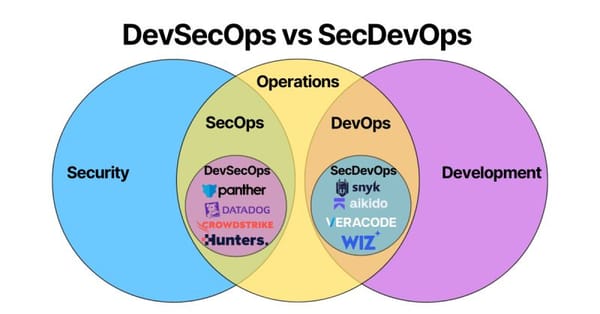Setup Guide for Cyber Deception Environments

Cyber deception has evolved significantly beyond traditional honeypots, becoming a proactive and dynamic defense strategy designed to mislead and confuse attackers while gathering valuable intelligence. This guide will walk you through the key considerations and steps for deploying and managing such environments.
1. Introduction: Why Deploy Cyber Deception?
Cyber deception aims to give defenders an advantage by creating deceptive layers within the IT environment that appear authentic to attackers. Its primary purposes include:
- Detecting Advanced Threats: Identifying novel attack techniques, zero-day exploits, and sophisticated adversaries that bypass traditional security measures.
- Gathering Threat Intelligence: Providing actionable insights into attacker behavior, tools, tactics, and procedures (TTPs). This intelligence can be used to strengthen defenses and anticipate future attacks.
- Enhancing Incident Response: Serving as an early warning system, alerting organizations to potential breaches, reducing "dwell time" (the period an attacker remains undetected), and providing immediate context for faster response.
- Reducing Alert Fatigue: Generating high-fidelity, low-volume alerts, as any interaction with deceptive elements is a clear indicator of malicious activity, minimizing false positives common with other security tools.
- Cost-Effectiveness: Creating and maintaining decoys is often less expensive than protecting every real asset against all possible threats.
2. Phase 1: Planning Your Deception Environment
Before deploying any deception technology, clear objectives and a thorough understanding of your environment are essential.
2.1 Define Clear Objectives
- What type of threats are you trying to detect? Are you focused on automated botnet activity, Advanced Persistent Threats (APTs), ransomware, or insider threats?.
- What is your primary goal? Is it gathering threat intelligence, improving incident response, or testing your existing defenses?.
- What level of interaction do you need? Low-interaction honeypots suffice for widespread automated attacks, while high-interaction honeypots or honeynets are better for studying APTs.
2.2 Choose the Right Type of Deception Technology
Modern deception technologies go beyond simple honeypots to offer diverse capabilities:
- Honeypots: Systems designed to lure attackers and study their behavior. They can be:
- Low-Interaction: Simple port listeners that offer minimal engagement, primarily for detecting widespread scans.
- High-Interaction: Simulate real operating systems and applications, providing detailed insights into attacker behavior, but require more resources.
- Honeynets: Simulate entire networks of interconnected honeypots to study coordinated attacks.
- Honeytokens / Canary Tokens: Lightweight, portable digital "tripwires" embedded in files, URLs, API keys, documents, DNS entries, or cloud services. They alert defenders instantly when accessed or manipulated, without requiring their own infrastructure. Examples include fake AWS keys, bogus login certificates, or tokens in sensitive files for data leak prevention.
- Honeyfiles / Honeydata: Fake data inserted into systems or databases that appear authentic, designed to be accessed by attackers to reveal their presence or methods. Used for early warning of ransomware activity.
- Moving Target Defense (MTD): Actively reconfigures network assets like IP addresses, port numbers, or even operating systems to increase uncertainty and cost for attackers. It's a proactive defense that makes it harder for attackers to establish persistence or move laterally.
- Advanced Deception Platforms: Comprehensive solutions that offer centralized management and dynamic deployment of various deception elements (tokens, full OS virtual machines, virtual appliances). These often include AI and machine learning capabilities and integrate with existing security solutions.
2.3 Understand Your Current Security Posture
- Inventory Assets & Network Mapping: List critical assets, sensitive data, network layout, boundaries, and traffic flow to identify areas where deception can fill gaps.
- Evaluate Existing Tools: Assess your current Security Information and Event Management (SIEM), Endpoint Detection and Response (EDR), and Security Orchestration, Automation, and Response (SOAR) solutions. Deception technology should integrate seamlessly to enhance existing workflows.
2.4 Resource Assessment
- Budget and Personnel Skills: Determine if you have the resources for operationalizing open-source tools (which offer flexibility but higher hidden costs) or if commercial solutions (with dedicated support and easier integration) are more suitable.
3. Phase 2: Implementing and Configuring Your Deception Environment
Effective implementation ensures realism and maximizes the chances of detection.
3.1 Isolate and Secure Your Deception Environment
- Network Segmentation: Place the deception environment (honeypots, honeynets) in an isolated network segment, separate from critical production systems. Use a demilitarized zone (DMZ) or a dedicated virtual LAN (VLAN).
- Virtualization/Containers: Deploy honeypots in virtual environments (VMs or Docker containers) to limit their impact if compromised and facilitate easy updates and replacement.
- Access Controls: Restrict access to the deception environment to authorized personnel only. Crucially, implement containment measures like firewall rules to limit outbound access, preventing compromised honeypots from being used as launchpads for attacks on your real systems or other networks.
3.2 Leverage Automation and AI
Modern deception heavily relies on these technologies:
- Automated Deployment: Use tools like Docker or Kubernetes to dynamically deploy and manage deception assets at scale, reducing manual effort.
- AI-Powered Analysis: Machine learning algorithms analyze attacker behavior and identify patterns. Deep learning can classify incoming HTTP requests to identify web application attacks or generate convincing fake content.
- Adaptive Deception: Deploy AI-driven honeypots that can change their behavior in real-time based on attacker actions, making them harder to detect by sophisticated threats.
- Reinforcement Learning (RL): Allows honeypots to dynamically adjust deceptive tactics in response to evolving attack patterns, improving effectiveness over time.
3.3 Ensure Realistic Simulation
To effectively lure attackers, your deception must appear authentic:
- Mimic Real Systems: Simulate real operating systems, applications, and services.
- Use Realistic Fake Data ("Honeydata"): Populate decoys with convincing, but fake, data (e.g., fake login pages, user accounts, database entries, bogus login certificates, fake AWS keys) to make them enticing. Deep learning can create "HoneyData" indistinguishable from real data.
- Avoid Obvious Traps: Ensure deceptive elements don't have easily detectable signs of being a trap (e.g., default configurations, unrealistic vulnerabilities). Stealth is paramount; a detected deception loses its effectiveness.
- Strategic Placement of Breadcrumbs: Place deceptive credentials in memory, password files, or Active Directory to increase the likelihood of interaction. These "breadcrumbs" can point to deceptive resources.
4. Phase 3: Monitoring, Analysis, and Response
The value of deception lies in the data it collects and how that data is used.
4.1 Monitor and Log All Activity
- Detailed Logging: Capture logs of all interactions with the deception environment, including IP addresses, timestamps, and commands executed. This data is crucial for forensic analysis and threat attribution.
- Deception Monitors: Specifically monitor the implemented deception techniques to warn of potential threats.
4.2 AI-Powered Detection and Analysis
- Behavioral Analytics: Use machine learning to analyze attacker behavior and identify patterns, even subtle anomalies.
- Threat Detection Engines: Leverage AI models (from your data layer) to detect current and emerging threats, processing information from deception, host, and network monitors.
- High-Fidelity Alerts: Interactions with decoys inherently generate high-confidence alerts, reducing noise and allowing security teams to focus on real threats.
4.3 Incident Response and Automation
- Immediate Context: When an attacker interacts with a decoy, you gain immediate context about their intent and movements, enabling faster decision-making.
- Automated Response (SOAR Integration): Integrate deception alerts with Security Orchestration, Automation, and Response (SOAR) solutions. This enables automated actions like isolating affected systems, blocking malicious IPs, or initiating further investigation workflows.
- Threat Hunting Enhancement: Deception creates "tripwires" that expose attackers moving laterally or escalating privileges, significantly simplifying and boosting proactive threat hunting efforts.
4.4 Valuable Threat Intelligence
- Attacker TTPs: By observing interactions with decoys, you can gain deep insights into attacker tactics, techniques, and procedures, which can then be used to harden your real systems and security controls.
- Zero-Day Detection: Deception can detect unknown attacks and zero-day threats because it flags any interaction with a non-business-critical resource as suspicious, regardless of specific signatures.
5. Phase 4: Ongoing Maintenance and Evolution
Deception environments are not "set and forget" systems; they require continuous care to remain effective.
- Regular Updates and Maintenance: Continuously update the software and services running on your deception assets to prevent them from being exploited. Rotate configurations periodically to keep attackers guessing.
- Continuous Optimization: Use telemetry from deception tools to fine-tune the placement and types of decoys, increasing coverage and effectiveness.
- Advanced AI Integration: Explore newer AI methods like federated architectures for collaborative learning without centralizing data, or generative models to create even more creative and adaptive deception strategies.
- Coordinated Deception: Develop strategies for coordinating and integrating multiple deception techniques simultaneously (e.g., combining honeypots with honeytokens and MTD) to exponentially improve outcomes and provide broader, deeper threat coverage.
- Enhanced Forensics: Leverage AI/ML to analyze post-incident data, continuously improving threat intelligence and strengthening defensive systems.
6. Ethical and Legal Considerations for Deployment
Deploying deception technology involves legal and ethical complexities that must be carefully managed.
- Define Objectives: Clearly state the purpose of your honeypot. Is it for research, threat intelligence, or active defense?.
- Privacy Concerns: Ensure your deception mechanisms do not inadvertently capture sensitive data from legitimate users.
- Consent and Transparency:
- For interactive services (e.g., SSH, web servers), implement clear warning and consent banners (e.g.,
/etc/banner,/etc/motdon UNIX; registry changes on Windows) before and after login. - For non-interactive services, consent is more difficult to obtain legally.
- Document the installation of these banners and keep backups of system configurations to prove consent mechanisms were in place.
- The "transparency principle" suggests users should be aware that they are using a network with honeypots, even if the exact locations are not disclosed.
- For interactive services (e.g., SSH, web servers), implement clear warning and consent banners (e.g.,
- Entrapment Risks: This is a legal defense, not a cause for suit. Avoid inducing or encouraging a person to commit a crime they would not have otherwise committed. The intention of a honeypot is to attract intruders, but direct recruitment or encouragement (e.g., posting messages encouraging hacking) can increase the risk of an entrapment defense. Generally, if an individual knowingly bypasses standard security methods, they may forfeit privacy protection.
- No-Harm Principle: Design the deception environment to ensure it causes no harm to innocent and legitimate users. This includes avoiding misleading messages that could trick legitimate users into harmful situations.
- Containment: Always ensure robust containment of your honeypot to prevent it from being used as a launchpad for attacks on other systems.
Conclusion
By adopting a strategic, AI-driven, and ethically sound approach to cyber deception, security engineers and hackers can transform their defense posture. This involves moving beyond passive monitoring to actively engaging and disorienting adversaries, significantly improving threat detection, response times, and overall cybersecurity resilience. Implementing and continuously refining these deception environments will be critical in staying ahead of evolving cyber threats.





